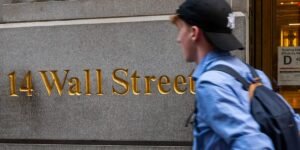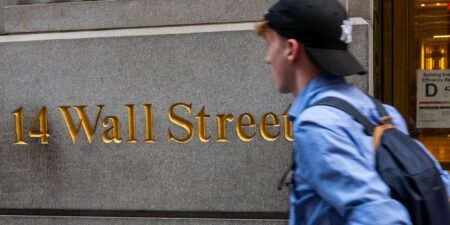The US economy added 73,000 jobs in July, missing the expected 106,000, and unemployment increased to 4.2%.
June’s job growth was revised from 147,000 to 14,000, and May’s job growth was revised from 144,000 to 19,000. The new report said these “were larger than normal” revisions, and there were 258,000 fewer jobs added than previously estimated over those two months.
Economists expected unemployment to tick back up from 4.1% to 4.2%, the same rate as between March and May. Unemployment has been consistently low, hovering between 4% and 4.2% since May 2024.
Labor force participation continued to decline, falling to 62.2% in July from 62.3%. The employment-population ratio also ticked down.
Marc Goldwein of the Committee for a Responsible Federal Budget said in a post on X that “all 73,000 new jobs in July were in health care and social services” on net.
Employment rose by 55,400 in healthcare from June to July. Employment fell in a few sectors, including manufacturing and professional and business services. Employment fell by 12,000 in the federal government.
Average earnings rose from $35.07 an hour in July 2024 to $36.44 an hour, a 3.9% increase from a year ago. Year-over-year growth in average hourly earnings has been hovering between 3.8% and 3.9% since January. Earnings rose 0.3% over the month, compared to 0.2% in June.
The new Bureau of Labor Statistics report is just one of several economic releases this week. Data released on Wednesday showed real gross domestic product growth was hotter than expected in the second quarter after a decline in the first, largely due to a drop in imports and a bounce back in consumer spending. However, growth in the first half of the year overall was slower than in 2024, and tariffs bring more uncertainty to future economic growth.
The labor market as a whole is still in its ongoing slow but steady state. Data published Thursday showed initial claims for unemployment insurance, an indication of layoffs, are still low. Other data earlier this week showed that the job openings rate fell in June, while the quit rate was still low, at 2% for the third straight month. The Conference Board’s July survey showed an uptick in the share of consumers who said jobs were plentiful, but also an uptick in people who said it’s tough to get a job. Job seekers have told Business Insider they’ve broadened their job search so they can try to land a job.
“What you see is, by many many statistics, the labor market is kind of still in balance,” Federal Reserve Chair Jerome Powell said at a press conference on Wednesday.
Powell said there is downside risk because the job market is “getting into balance due to declines in both supply and demand.” Further slowing could lead to an uptick in layoffs later this year.
The Federal Reserve held interest rates steady for the fifth straight time earlier this week. More data will be published before the Fed’s next decision. According to the CME FedWatch tool, which estimates probabilities for the Fed’s future decisions based on market moves, the likelihood of a cut at the next scheduled Fed meeting in September shot up from around 40% before the jobs report to nearly 70%.
This is a developing story. Please check back for updates.
Read the full article here

















